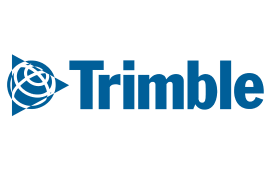The Ultimate Guide to Electrical Estimating in the United States
The Ultimate Guide to Electrical Estimating in the United States
Introduction
In the world of construction, electrical estimating plays a pivotal role in ensuring projects are completed on time and within budget. Accurate estimates are essential to the success of electrical contractors, helping them win bids and manage costs effectively. This blog dives deep into the process of electrical estimating in the U.S., exploring best practices, common challenges, and tools that can help professionals streamline their estimating process.
What is Electrical Estimating?
Electrical estimating refers to the process of calculating the cost of materials, labor, and time required to complete an electrical installation or repair project. Estimators take into account various factors such as project scope, building codes, and specific requirements to develop accurate bids. An accurate estimate helps contractors avoid cost overruns and ensures profitability.
Key Components of Electrical Estimating:
- Material Costs: The cost of cables, wires, switches, outlets, and other materials used in the project.
- Labor Costs: Estimating the number of work hours required for electricians and other labor.
- Overhead and Profit Margins: Calculating the cost of running the business and ensuring profitability.
- Equipment Costs: Costs associated with tools and machinery needed for the job.
The Electrical Estimating Process: A Step-by-Step Guide
- Scope of Work: Understand the full scope of the electrical work to be done. This includes reviewing the project plans, specifications, and blueprints to identify all electrical systems and components.
- Material Takeoff: Conduct a material takeoff to determine the amount and type of materials required. This process involves detailed measurement and listing of all electrical components needed.
- Labor Estimation: Estimate the number of labor hours required based on the scope and complexity of the project.
- Cost Calculation: Add the material, labor, and overhead costs to determine the overall project cost. Factor in additional considerations such as permits, inspections, and project-specific contingencies.
- Bid Preparation: Prepare a detailed bid or proposal document that outlines the cost breakdown and project timeline. This document is submitted to the client or general contractor for approval.
Best Practices for Electrical Estimating
- Use Modern Estimating Software: Electrical estimating software like Accubid, Procore, and Bluebeam can help streamline the process. These tools often come with built-in databases of materials, labor rates, and local codes.
- Accuracy in Material Takeoff: Accurate material takeoffs are the foundation of an accurate estimate. Always double-check quantities and specifications to avoid discrepancies.
- Consider Local Labor Rates: Labor costs can vary greatly depending on the location of the project. Make sure to account for local wage rates and union agreements.
- Be Prepared for Change Orders: It's common for projects to encounter changes during construction. Factor in a contingency for these potential changes to ensure you're prepared for unexpected costs.
Challenges in Electrical Estimating
- Labor Shortages: A growing shortage of skilled labor in the electrical field can lead to higher labor rates and challenges in estimating timeframes accurately.
- Code Compliance: Staying up-to-date with local and national electrical codes is crucial. Misunderstanding or overlooking code requirements can result in costly rework.
- Material Price Fluctuations: Prices for materials such as copper wiring, circuit breakers, and electrical panels can fluctuate, impacting project costs. Estimators must stay informed about market conditions to account for these changes.
- Technology Integration: As construction technology advances, electrical estimators need to keep pace with software updates and new tools that can affect the accuracy of their estimates.
The Role of Technology in Electrical Estimating
Technology has revolutionized electrical estimating in recent years, making the process faster and more accurate. Here are a few ways technology is enhancing electrical estimating:
- Cloud-Based Estimating Tools: Cloud platforms allow electrical contractors to access estimates from anywhere, share documents with teams and clients, and collaborate in real time.
- 3D Modeling and BIM: Building Information Modeling (BIM) and 3D modeling software help estimators visualize electrical systems within the building, improving accuracy in material takeoff and labor estimation.
- Mobile Applications: Mobile estimating apps allow estimators to access and input data on-site, reducing the time spent in the office and ensuring estimates are based on real-time information.
The Future of Electrical Estimating
The future of electrical estimating is bright, with continuous advancements in software and technology. Artificial Intelligence (AI) and machine learning are expected to play a major role in automating parts of the estimating process, providing more accurate predictions, and helping contractors manage risks more effectively. Additionally, the growing demand for sustainable energy solutions and smart homes is shaping the future of electrical projects, requiring estimators to stay on top of new trends and technologies in the electrical field.
Conclusion
Electrical estimating is an essential skill in the construction industry, requiring a combination of technical knowledge, experience, and the right tools. By understanding the estimating process, using modern software, and staying informed about industry trends, electrical contractors can improve their bidding accuracy, increase profitability, and ensure project success. Whether you're an experienced estimator or new to the field, following best practices and embracing technological advancements will help you navigate the complexities of electrical estimating in the U.S.
Recommended Resources:
- Electrical Estimating Software: Explore popular options like Accubid, Trimble, and McCormick Systems for streamlined estimating.
- National Electrical Contractors Association (NECA): A resource for industry standards, training, and events.
- Electrical Codes & Standards: Stay up to date with the NEC (National Electrical Code) and local regulations to ensure compliance and accuracy.

Contact Us
Schedule a Consultation
(*) - Required field
Our Partners




